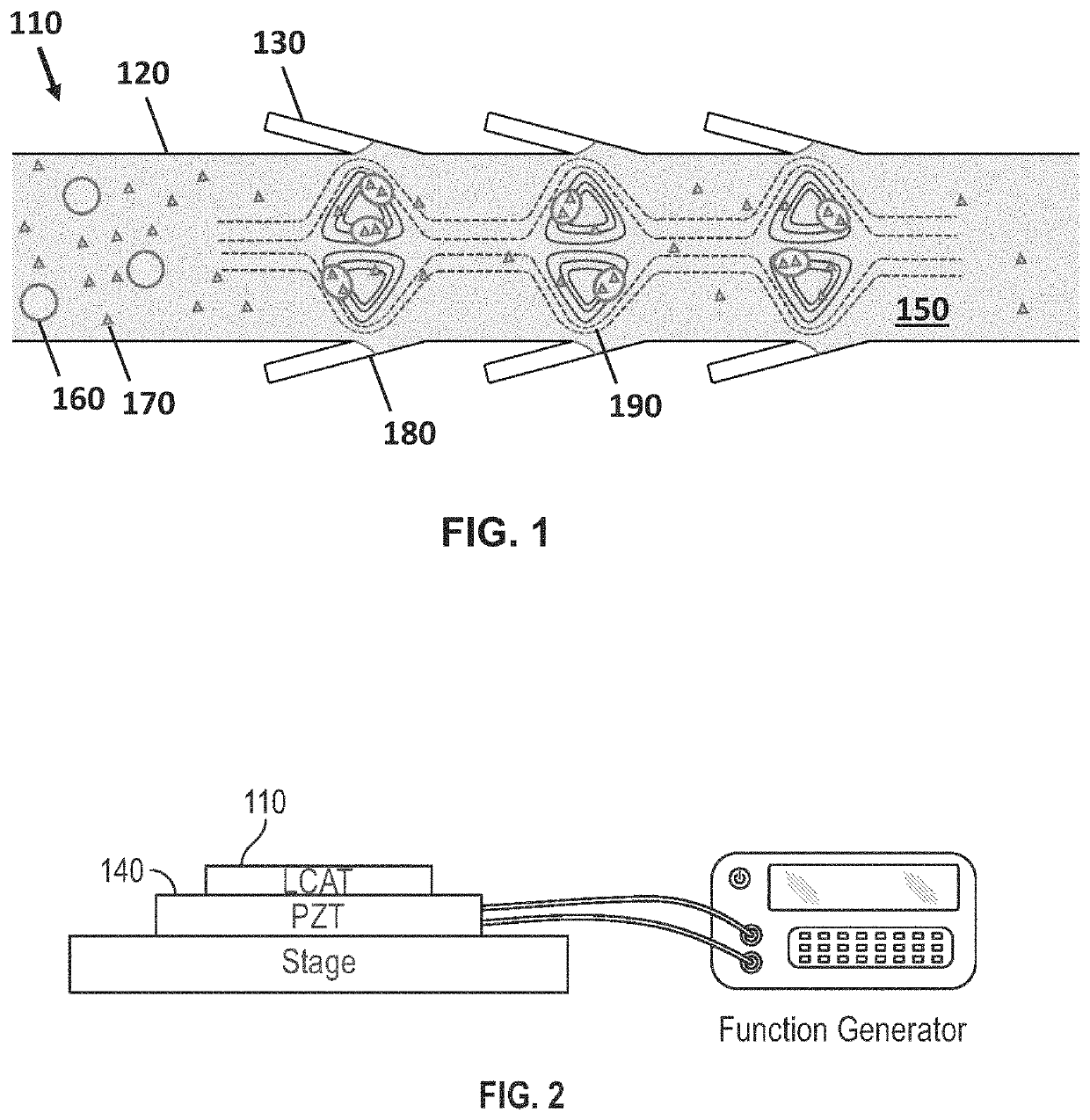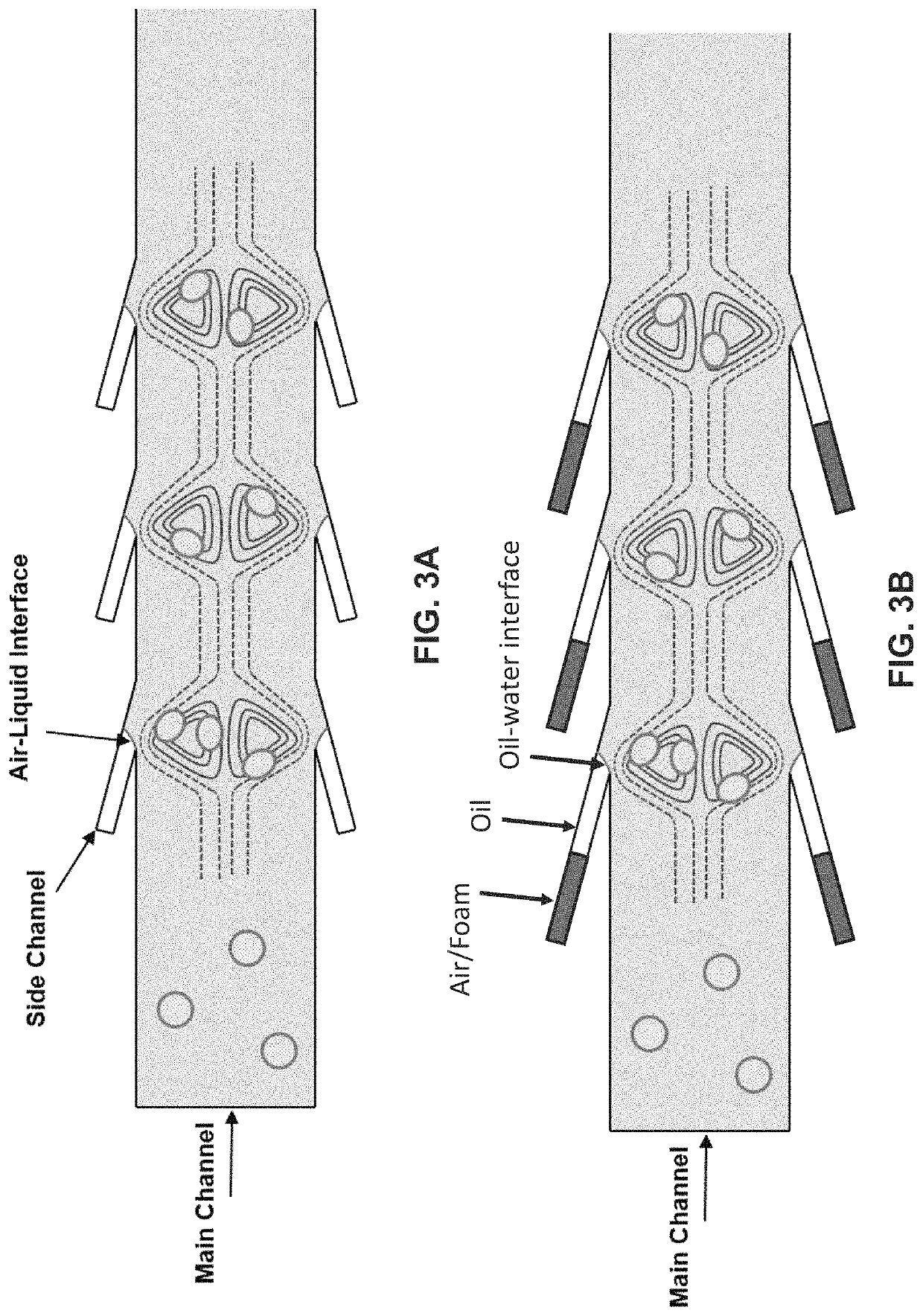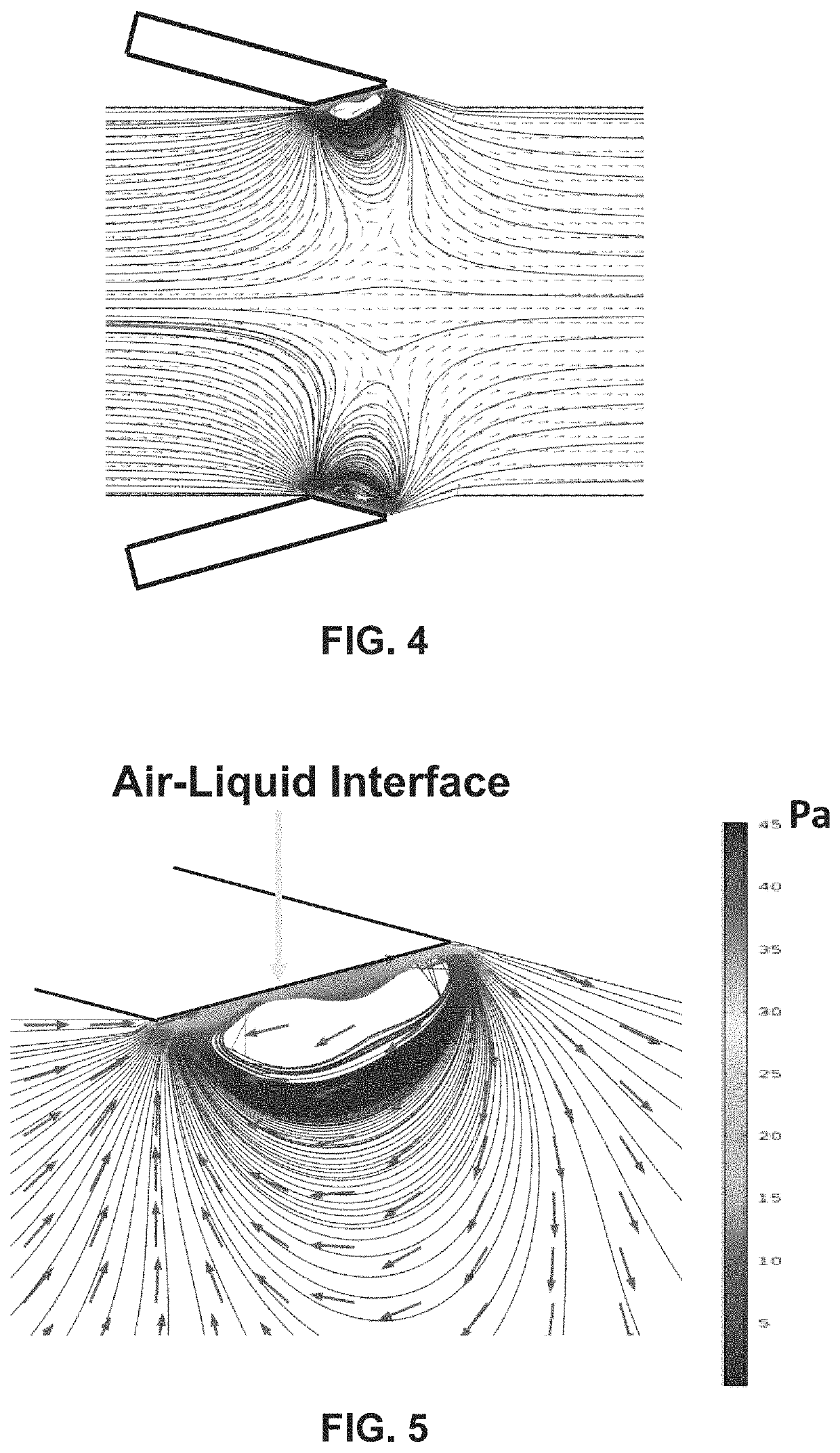Lateral cavity acoustic transducer (LCAT) for shear-induced cell transfection
a transducer and lateral cavity technology, applied in fluid controllers, laboratory glassware, chemistry apparatus and processes, etc., can solve the problems of deterioration of cell viability, high probability of clogging, and acoustic microstreaming vortices in the device, so as to improve cell viability, improve efficiency, and improve the effect of cell viability
- Summary
- Abstract
- Description
- Claims
- Application Information
AI Technical Summary
Benefits of technology
Problems solved by technology
Method used
Image
Examples
example 1
tal Protocol
[0065]Dextran was prepared at the concentration of 20 mg / mL in PBS buffer and mixed with the cell sample at 1:1 ratio. The mixed sample was then introduced at the device inlet. The PZT frequency and voltage amplitude were set to 50.2 kHz and 4 Vpp, respectively. This resulted in acoustic microstreaming vortices in the LCAT device (with 500 microns width and 100 microns height) that were able to trap cells larger than 10 microns in size. The device was then run for 5 minutes. Throughout 5 minutes operation of the LCAT device, an AC electric field of 10 Vpp with frequency of 10 kHz was applied for three times (each cycle 1 s). The cells were then collected from the outlet and incubated for 1 hour at 37 degrees Celsius. After incubation, the cells were washed three times with PBS and flow cytometry were performed.
example 2
scription
Summary:
[0066]In one embodiment, the present invention features a multimodal, portable, and integrated platform based on cavity induced acoustic microstreaming and on-chip electroporation for size-selective and efficient intracellular delivery of exogenous materials.
Introduction:
[0067]Intracellular delivery of exogenous materials is an important, yet challenging, step in basic biological research as well as in therapeutic applications. Microfluidic methods of the present invention allow for high throughput and efficient intracellular delivery of biomolecules. The platform, within a single step, facilitates intracellular delivery by: (i) shear-induced mechanical deformation, (ii) on-chip electroporation for transiently disrupting the cell membrane, and (iii) efficient mixing of the exogenous materials to enter into cells. Compared to existing methods, the present system not only can deliver a wide range of molecular sizes at high efficiency, but it also offers unique sample ...
PUM
| Property | Measurement | Unit |
|---|---|---|
| shear stress | aaaaa | aaaaa |
| shear stress | aaaaa | aaaaa |
| angle | aaaaa | aaaaa |
Abstract
Description
Claims
Application Information
 Login to View More
Login to View More - R&D
- Intellectual Property
- Life Sciences
- Materials
- Tech Scout
- Unparalleled Data Quality
- Higher Quality Content
- 60% Fewer Hallucinations
Browse by: Latest US Patents, China's latest patents, Technical Efficacy Thesaurus, Application Domain, Technology Topic, Popular Technical Reports.
© 2025 PatSnap. All rights reserved.Legal|Privacy policy|Modern Slavery Act Transparency Statement|Sitemap|About US| Contact US: help@patsnap.com



